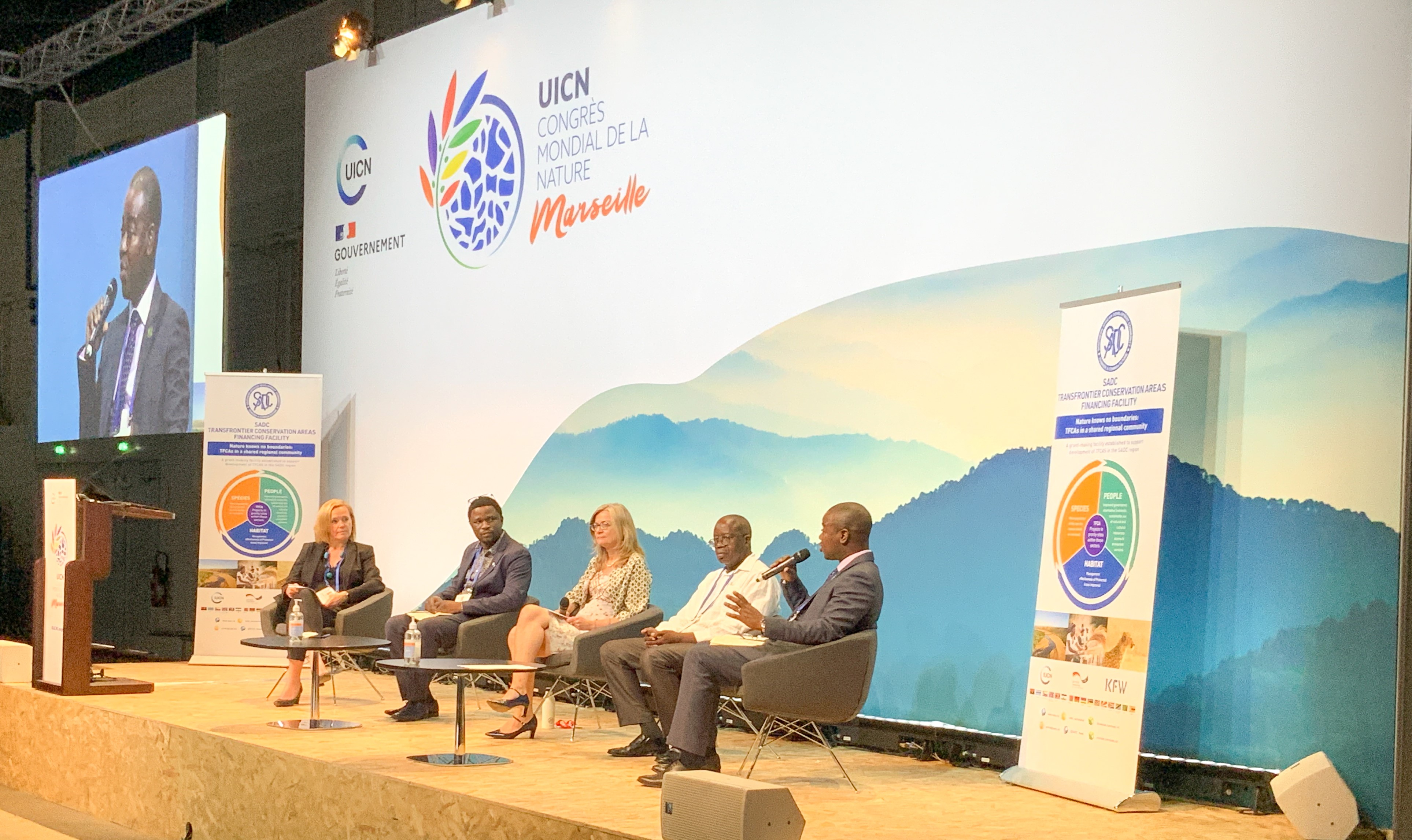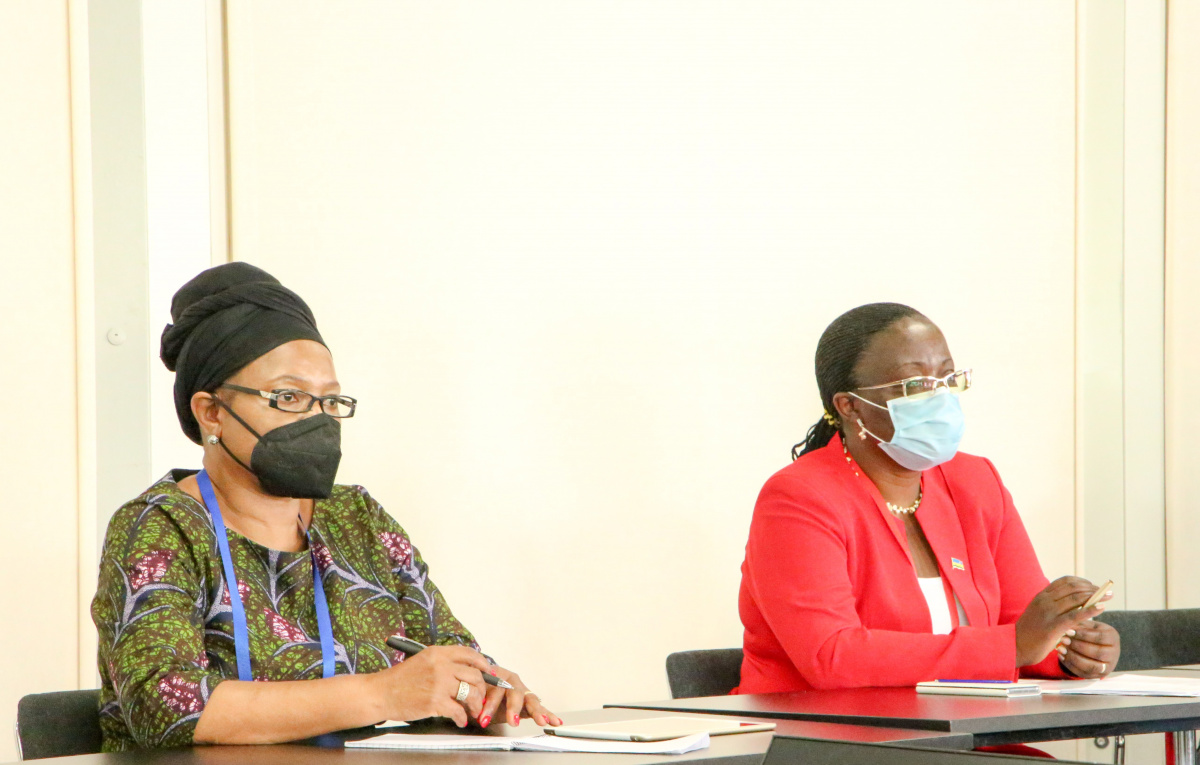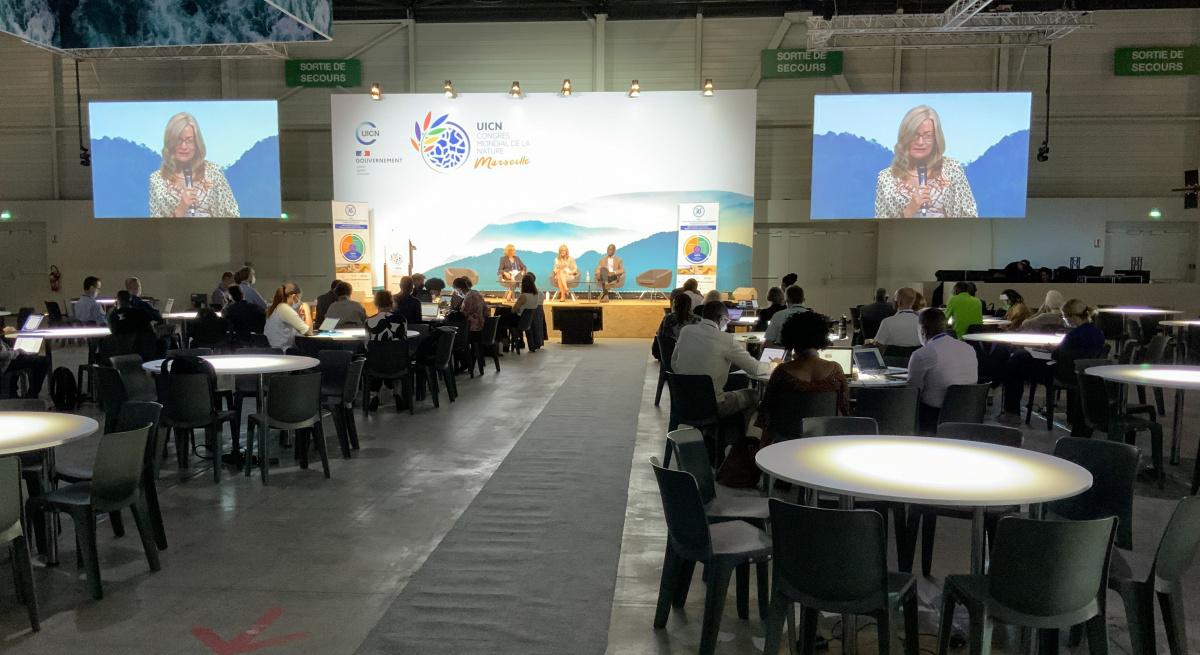SADC Secretariat and partners officially launch a Financing Facility to boost transboundary conservation in Southern Africa
The Financing Facility which aims to reach a volume of EUR 100M in the medium to long term, will benefit 18 Transfrontier Conservation Areas (TFCAs) in 16 countries, covering over 700 000 km2 of shared ecosystems in the SADC region
The Malawi Minister of Forestry and Natural Resources, Hon. Nancy Tembo launched a Financing Facility to support transboundary conservation actions for SADC Transfrontier Conservation Areas (TFCAs). The Financing Facility was launched during the 2021 IUCN World Conservation Congress
Speaking at the launch on behalf of the SADC Chair, Hon. Nancy Tembo noted: “The TFCA Financing Facility will complement efforts by governments of Southern Africa to develop sustainable financing mechanisms for conservation of nature which straddles across international boundaries in the region.”
The SADC TFCA Financing Facility is a grant-making mechanism established to support development of TFCAs in the SADC region. The first phase of the Financing Facility currently funded by the German Government through KfW has an initial budget commitment of EUR 25m and an additional commitment announced in July 2021 of up to EUR 8m.
Mr Domingos Gove, Director, Food Agriculture and Natural Resources at the SADC Secretariat emphasized the importance of TFCAs in collaboratively managing shared natural and cultural resources across international boundaries: “The establishment this regional TFCA financing mechanism is a major component of the SADC TFCA programme (2013). This financing facility is a basis for long-term and more sustainable investment in tangible measures that strengthen ecological, economic, cultural and institutional connectivity within SADC TFCAs.”
Also speaking during the high-level event, IUCN Director General, Dr Bruno Oberle, congratulated the 16 Member States of SADC on the establishment of the SADC TFCAs Financing Facility and emphasised the opportunities for forging strategic partnerships. “IUCN is honoured to host the launch of the financing facility at the World Conservation Congress in Marseille. The operationalisation of this financing facility offers major opportunities for forging strategic partnerships with implementing and development partners, including governments, Non-Governmental Organisations (NGOs) and Community- Based Organisations (CBOs) to deliver tangible results for biodiversity conservation and sustainable development,” said Bruno.
In her remarks, Ms. Christiane Laibach of KfW underscored the importance of the Financing Facility as a flexible , demand driven mechanism supporting projects on the ground that contribute towards conservation efforts in the SADC region. Ms. Laibach noted the role the Facility plays in contributing towards sustainable financing of TFCAs with the overall ambition to reach a target of EUR 100m, in the medium to long term. In this context, she invited other development partners to come on board and invest in the TFCA Financing Facility to reach this ambitious target.
The SADC TFCA Financing facility will be executed by the International Union for Conservation of Nature (IUCN) in the Eastern and Southern Africa Region. IUCN will manage the grant-making process through a dedicated Programme Management Unit.
Why TFCAs
TFCAs are founded on the realization that natural resources that straddle international boundaries are shared assets with the potential to meaningfully contribute to conservation of biodiversity and the socio-economic development of rural communities. TFCAs provide a means of creating an enabling environment for local participation in decision-making processes, increasing opportunities for investment in income generating activities for communities to improve local economies resulting in poverty reduction. The positive ecological effects of well-managed TFCAs further promotes sustainability of ecosystems and their capacity to provide the necessary goods and services required to support the sustainable development of the region through a unique level of regional cooperation amongst participating countries. Additionally, TFCAs often seek to establish a complementary network of formal and informal protected areas across the landscape, linked through corridors, which ensure the continued existence of migratory wildlife species, which are otherwise becoming increasingly isolated due to habitat loss and fragmentation.






